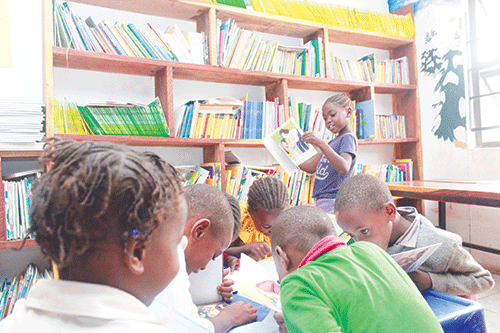Pricilla Mukokobi
Lahja Nashuuta
As the year draws to a close, New Era looks back at some of the Namibian education sector’s achievements and setbacks during the 2023 academic year.
Chief among the setbacks is the high failure rate of candidates who sat for the 2022 national examinations, and about 80% of the candidates who sat for the Namibia Senior Secondary Certificate Ordinary (NSSCO) and the Advanced Subsidiary (AS) levels failing to qualify for admission to tertiary institutions.
The school performance stirred the nation, with many fingers pointing to the reformed curriculum that was implemented in 2021, with many saying teachers and learners were not well-equipped with adequate knowledge of the curriculum, while others say it is not realistic to the Namibian education system.
On its part, the Ministry of Education, Arts and Culture attributed Covid-19 and climate change in the form of drought to the poor examination results.
Budget allocation
In the 2023 academic year, Namibia has shown commitment to transforming this sector by allocating a huge chunk of the national budget to education. The ministry received N$16,2 billion during the 2023/24 financial year, which constitutes 22.5% of the national budget.
Line minister Anna Nghipondoka said at the time that 79.7% of this amount is spent on paying staff members’ salaries, leaving only 20% for school grants, textbooks, stationery and infrastructure development.
“Our operational budget allocation, which stands at about N$16.2 billion, takes up 96.6% of our total allocation, of which the bulk (79.7%), goes towards the defrayal of personnel expenditure, thus leaving only about 20% for other operational expenditures.
The development budget allocation of N$577 million is 3.4% of the total budget allocation to the ministry, and will mainly cover ongoing commitments, primarily on the rehabilitation and construction of education facilities,” the minister was quoted as saying.
Stakeholders in education contributions
In 2023, significant steps were made in education as the most admired brand, MTC, in collaboration with the MVA Fund, constructed four classrooms and a storeroom, amounting to N$1.2 million. This impactful initiative, known as the MTC Rural School Project, reached the Kahunikwa Primary School, Onduludiya Combined School and Groendraai Primary School. Furthermore, the Japanese government contributed to the transformation of the Malundu Junior Primary School in the Zambezi region, providing a block of three classrooms and a storeroom, replacing the initial mud structure as well as chipped in significantly in the renovation of the St. Barnabas Primary School in Katutura. MTC also unveiled a block of four classrooms and a storeroom in the Zambezi region, bringing the total number of classrooms constructed under this project to an impressive tally of 41. These efforts signify a positive step towards improving educational infrastructure in the regions.
Higher education victories
This year, the Namibia Students’ Financial Assistance Fund (NSFAF) announced that their funding increased to N$2.1 billion, which has resulted in close to 5 000 more students being assisted financially with their studies this year. NSFAF acting chief executive officer Kennedy Kandume was quoted as saying that the funding is up from the N$1.58 billion in 2022.
Furthermore, the institutions of higher learning – University of Namibia (Unam), Namibia University of Science and Technology (Nust) and the International University of Management (IUM) recorded a high number of graduates in different fields of study.
About 3 300 students graduated from Nust, whereas Unam also recorded a remarkable total of 4 854. IUM recorded a total of 2 804 graduates this year.


